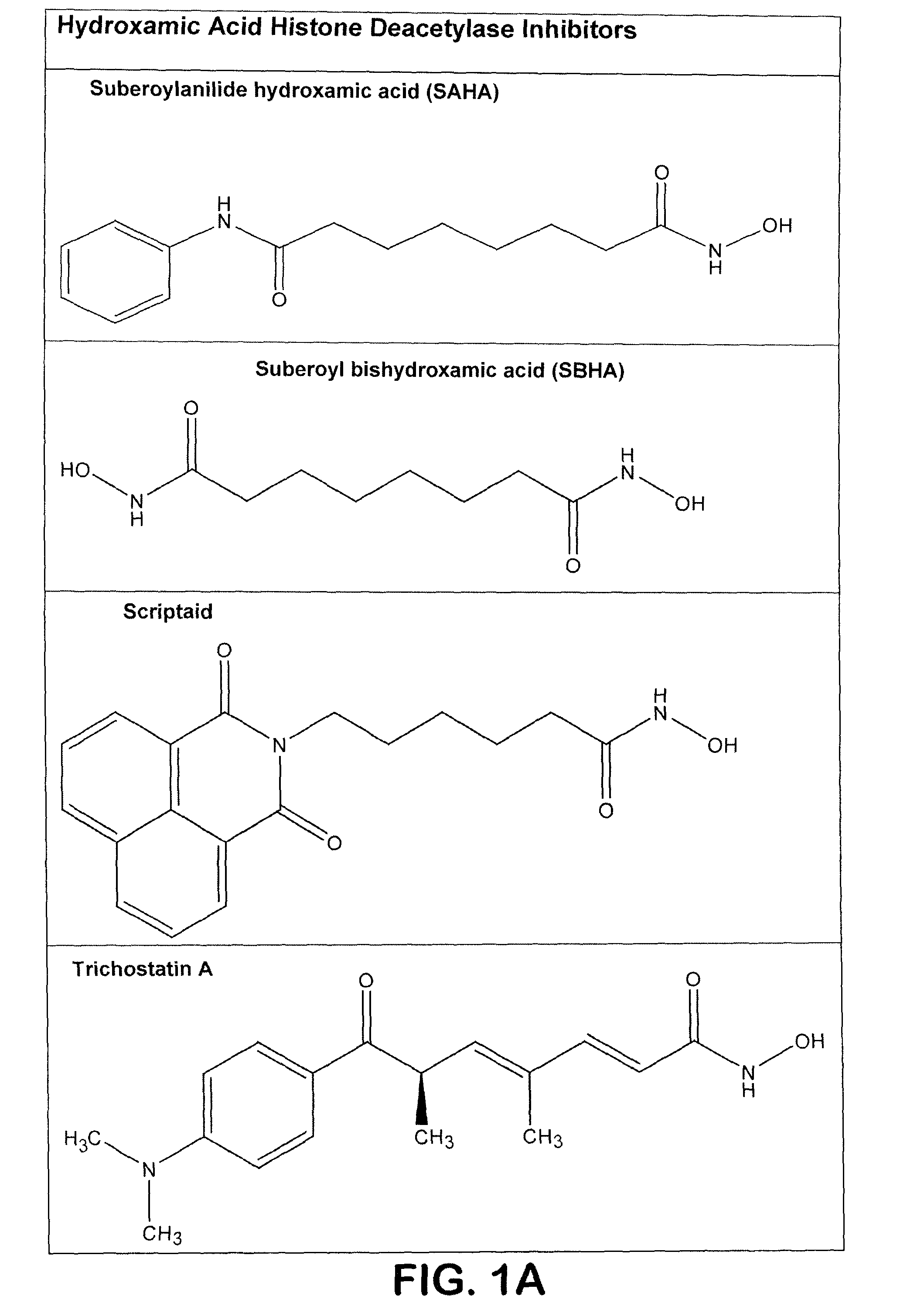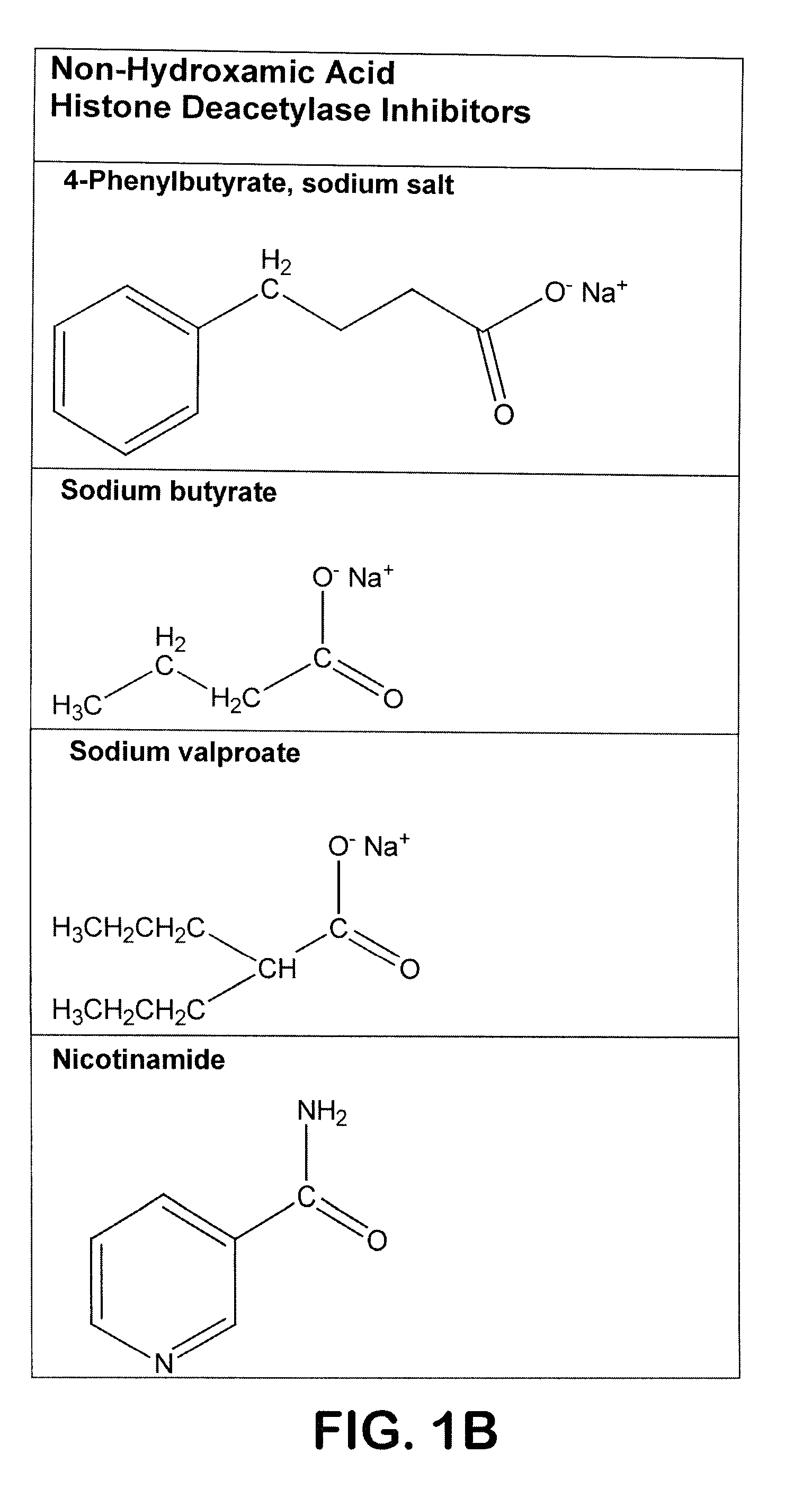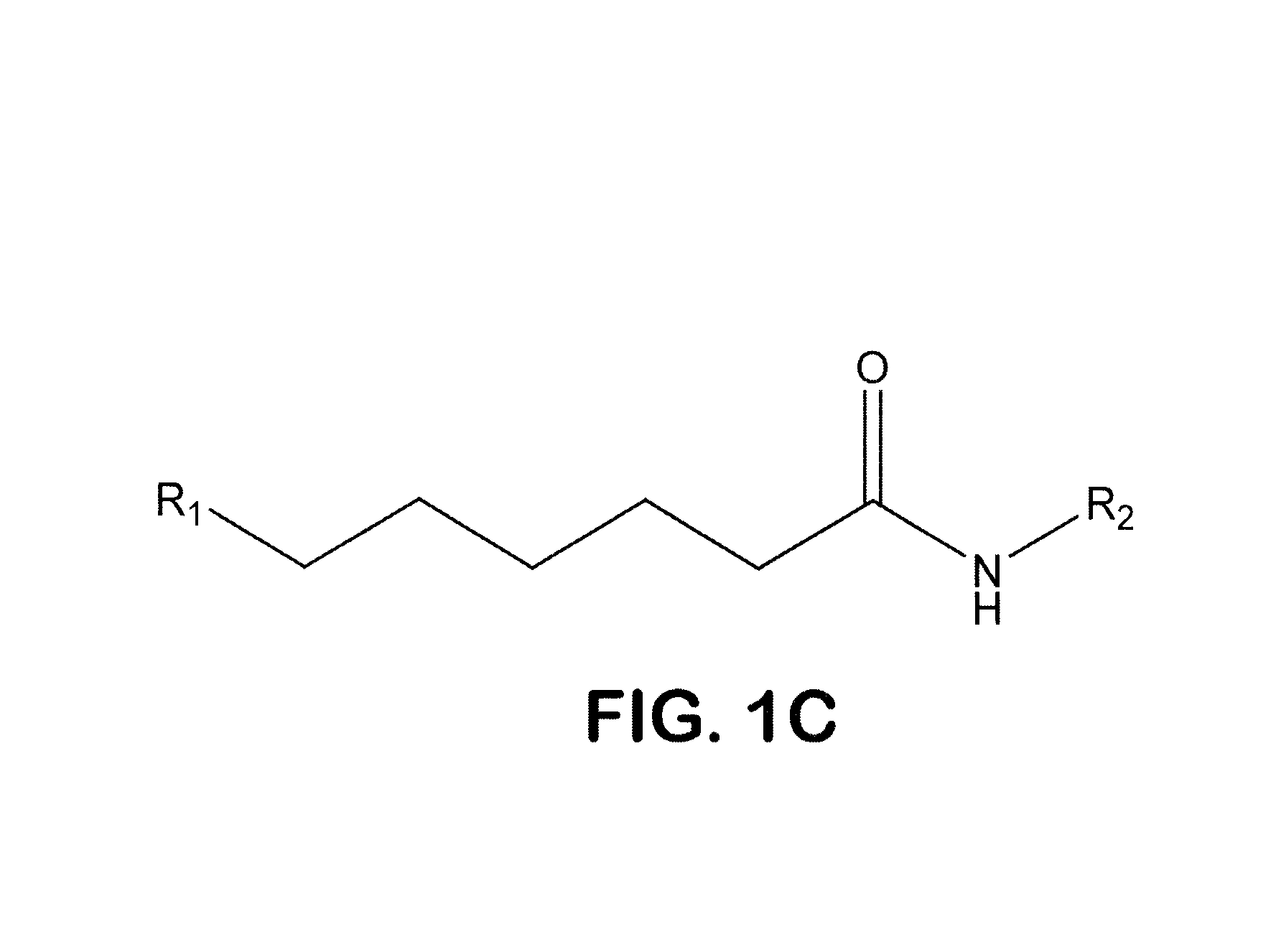Tumor cell differentiation agents as chemical inhibitors and treatments for intracellular parasites
- Summary
- Abstract
- Description
- Claims
- Application Information
AI Technical Summary
Benefits of technology
Problems solved by technology
Method used
Image
Examples
example 1
Hydroxamic Acids as In Vitro Inhibitors of T. gondii
[0070]Materials and Methods: Unless otherwise noted, the following materials and methods were used in all of the following Examples.
[0071]Drugs—Trichostatin A, sodium valproate, 4-phenylbutyrate, and sodium butyrate were purchased from Sigma Chemical Company (St. Louis, Mo.). Scriptaid was purchased from BioMol International (Plymouth Meeting, Pa.). SAHA was the gift of Dr. Chris Reilly. TSA, SAHA and scriptaid were dissolved in DMSO as 10 mM stocks and stored at −20° C. They were diluted into culture medium immediately prior to use. The concentration of DMSO solvent in these experiments did not exceed 0.1%. Fresh stock solutions of sodium valproate, phenylbutyrate, and sodium butyrate were prepared in sterile phosphate-buffered saline and diluted into culture medium for each experiment. Control treated groups received an equal volume of DMSO or phosphate-buffered saline.
[0072]Parasite propagation—The RH strain of Toxoplasma gondi...
example 2
In Vivo Anti-Toxoplasmosis Activity of Hyrdroxamic Acid Inhibitors
[0105]To extend the in vitro data developed and reported above, in vivo studies were carried out to determine the effectiveness of compounds of the present invention in treating intracellular parasites. Specifically, female CD-1 mice (20 g) were inoculated in the sub-scapular region with 5,000 T. gondii tachyzoites on Day 0. TSA, SAHA, and scriptaid were dissolved in DMSO and administered in a DMSO-saline solution once daily by i.p. injection beginning on day −1. The doses used in this study were: TSA (0.5 mg / kg), SAHA (50 mg / kg) and Scriptaid (3.5 mg / kg). The doses of TSA and SAHA are near maximal tolerated doses in this species. The dose of scriptaid was not optimized in this experiment. In this study, valproic acid was administered orally in the drinking water at a dose of 300 mg / kg. Survival was monitored twice daily beginning on day 9 of the study. The results are depicted graphically in FIG. 5A and in tabular fo...
example 3
Anti-Cancer Activity of a Compound of the Invention by Generation of Reactive Oxygen Species
[0107]This study was preformed to show that other compounds according to the invention are suitable for use as inhibitors of intracellular parasites. While the data shows such an activity is present, it also shows that the compound, NSC3852 (5-nitroso-8-quinolinol) links reactive oxygen species to cell differentiation and apoptosis in MCF-7 human mammary tumor cells.
[0108]More specifically, it was found that NSC3852 has cell differentiation and anti-proliferative activity in human breast cancer cells in tissue culture and anti-tumor activity in mice bearing P388 and L1210 leukemic cells. We investigated the mechanism of NSC3852 action in MCF-7 human breast cancer cells using electron spin resonance (ESR). Reactive oxygen species (ROS) were detected in MCF-7 cell suspensions incubated with NSC3852 using the spin trap 5,5-dimethyl-1-pyrroline-N-oxide (DMPO). Formation of the DMPO-OH adduct was ...
PUM
| Property | Measurement | Unit |
|---|---|---|
| Volume | aaaaa | aaaaa |
| Volume | aaaaa | aaaaa |
| Fraction | aaaaa | aaaaa |
Abstract
Description
Claims
Application Information
 Login to View More
Login to View More - R&D
- Intellectual Property
- Life Sciences
- Materials
- Tech Scout
- Unparalleled Data Quality
- Higher Quality Content
- 60% Fewer Hallucinations
Browse by: Latest US Patents, China's latest patents, Technical Efficacy Thesaurus, Application Domain, Technology Topic, Popular Technical Reports.
© 2025 PatSnap. All rights reserved.Legal|Privacy policy|Modern Slavery Act Transparency Statement|Sitemap|About US| Contact US: help@patsnap.com



